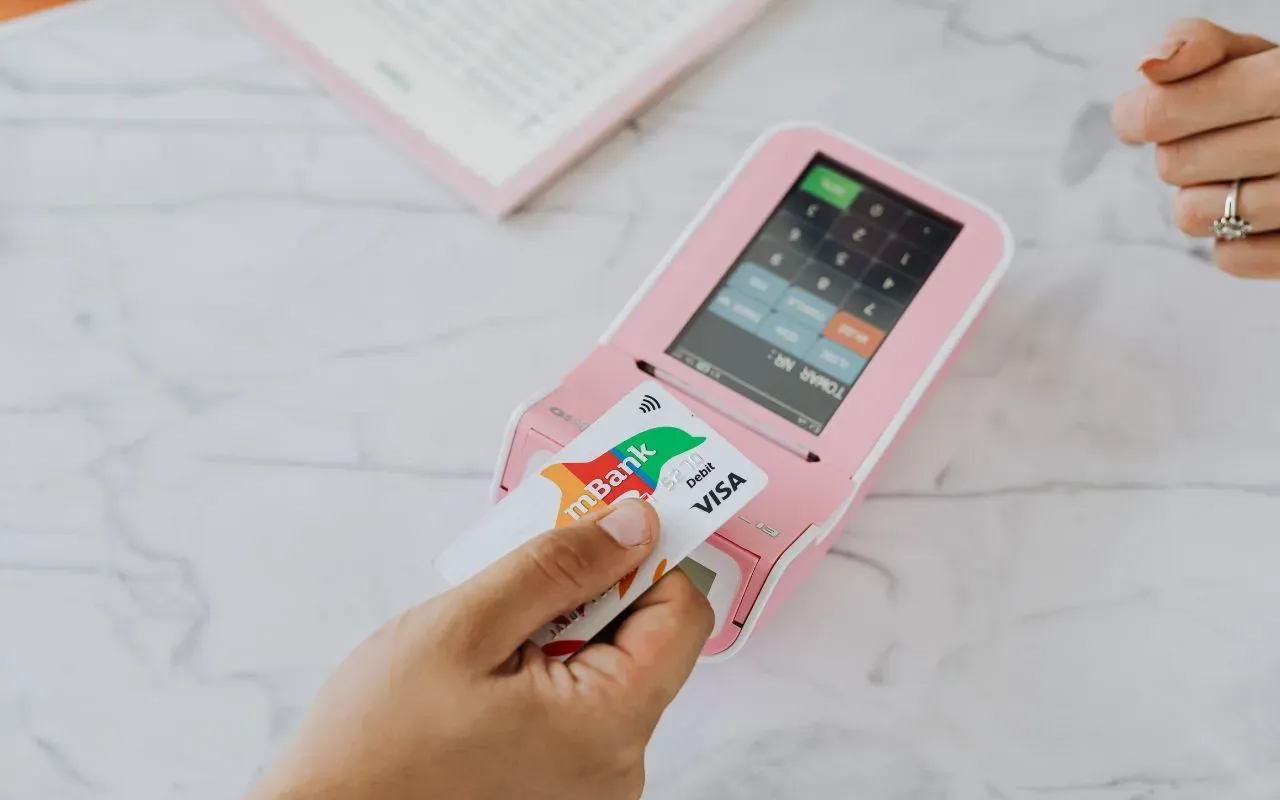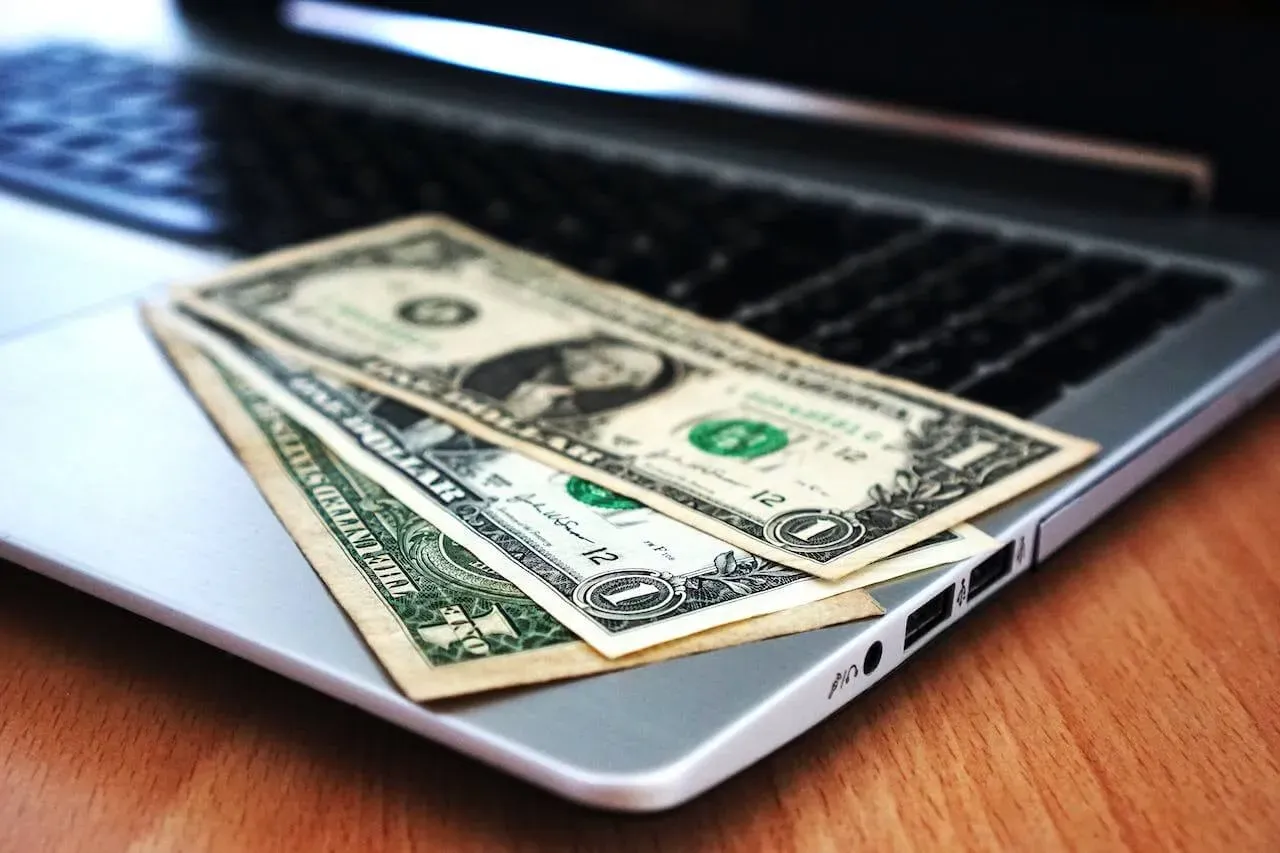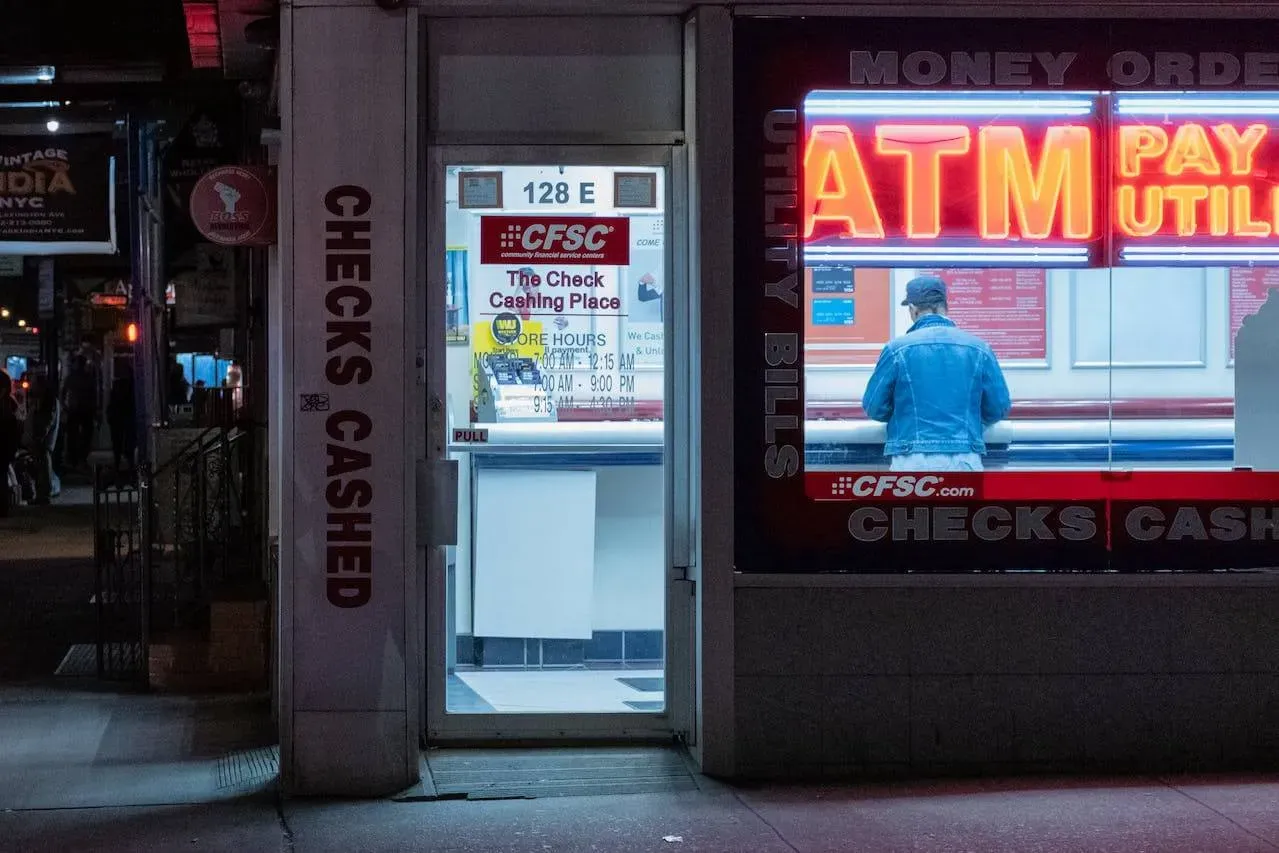How Old Do You Have to Be to Get a Debit Card?
The opinions expressed in this article are the author's own and do not reflect the view of Pathward®.
When you're a kid, all you want to be is a grown-up. You want to stay up late, go out whenever you want, and have money! But what kids don't know is that a lot of responsibility comes with money, like having a bank account, managing money, and knowing how to work a debit card. But the real question is, how old do you have to be to get a debit card? Hmm.
In this article, I’ll go over what a debit card is, debit cards for minors, some banking basics, and what to look for when choosing a bank and debit card. I will also provide you with our list of some really great debit cards for kids and teens.
At Bold.org, we believe the key to success is staying ahead of the game, and when it comes to financial literacy, it's so important to gain this knowledge sooner rather than later. Knowing how to manage your money, as well as how to spend it, is crucial, especially at a young age, so let's help set you up for financial success!
Create a profile and check out our list of scholarships you can apply for!
What Is a Debit Card?
Having access to money can be a rush, especially at a young age, and it's easy to be impulsive when swiping. But what exactly is a debit card, and what does it do? Simple! A debit card is a payment card that allows you to send money, make purchases, and withdraw money directly from your bank account.
Debit cards can also be linked to either a checking or savings account and can be used at different places like stores, online, and ATMs. Whenever you use a debit card, funds are deducted from your account, unlike a credit card, where you borrow the money and pay it back later. Debit cards are a widely accepted form of payment that offers convenience and security when accessing your funds. So, what is the minimum age for kids and teens to receive a debit card? Let's talk about it.
Apply for the Bold Debit Card today!Debit Cards for Minors
Preparing a child for the future means making sure parents are fully informed on their paths to success, and this includes all financial aspects. While most people think minors are not able to get their own debit card until they're at least 15 years old, the truth is a child as young as six years old is able to get a prepaid debit card when their parent opens an account with them. Yes, that's right. Six-years-old!

These prepaid debit cards allow parents and guardians to add funds to the cards for their children to spend. And while you might think six is too young, there are so many benefits to starting their financial understanding at that age. Not only will it instill a sense of responsibility in their minds, but it will also teach them the concept and value of a dollar at a young age.
Now, if we're talking teenagers, the average teenager can get their first debit card at 13 years old with parental control. Teen debit cards are usually connected to a joint bank account with their parent(s), to which they both have access. This way, all parties can monitor spending. However, only the parent can freeze the debit card if needed.
If you're looking for financial information for college students, head over to our blog for more information!
Important Banking Basics
Before getting started, let's first discuss some banking basics. Understanding important banking basics will not only help you navigate the world of personal finance but also help parents set up their children for financial independence and future success. So, let's go over some key financial literacy terms to be aware of:
Free Checking Accounts
When opening up a bank account, the first step is to look into a free checking account. While most banks offer checking accounts with a monthly fee, they also offer free checking accounts that typically do not charge a monthly or annual fee. This type of account means you can keep your money and account open without racking up any regular charges.
However, most banking institutions do enforce fees if bankers don't stay within certain requirements, so be sure to ask questions to keep yourself informed. For instance, minimum balance requirements are typical. Some free checking accounts may have minimum balance requirements to avoid fees—and basic features. Free checking accounts usually come with basic features such as a debit card, checks, and access to online and mobile banking, as well.
Free Savings Account
Just like a free checking account, free savings accounts have no monthly fees. But unlike checking accounts, most free savings accounts offer interest on the money you deposit! Earning interest allows your savings to grow over time and save even more money than you already are. I advise you to check the interest rates at your chosen bank because they may vary depending on the financial institution.
Minimum balance requirements also apply with free savings accounts, as well as some savings goals and tools features. These features help you set and track savings goals and can assist in budgeting, managing money, and motivating you to keep saving.
Get Started with the Bold Debit Card
Earn rewards that help pay for school.* Apply for the Bold Debit Card today!
Join Bold.orgDeposits and Withdrawals
Deposits and withdrawals are key when it comes to financial responsibility and money management. Depositing is the act of putting money into your checking or savings account, while withdrawing is the act of taking money out of your checking or savings account. Learning how to make deposits into your bank account, whether through direct deposit, ATM deposits, or in-person transactions, can help teach financial literacy and money management skills.
Overdraft, Maintenance, and ATM Fees
Now, this is where things can get tricky, and definitely something to be cautious of. It's crucial to be aware of potential fees associated with your bank account, such as overdraft fees, maintenance fees, and ATM fees.
Understanding these charges can help you avoid unnecessary expenses and manage your finances more effectively. So, don't be afraid to ask questions. Asking questions will only support the goal of creating good money habits.
Please note: it's always a good idea to compare different banks and their offerings to find a free checking and savings account that suits your needs. Each banking institution is equipped with different financial features, so don't settle for the first one you find. Shop around until you find one that works best for you and your family.
What to Look for When Choosing a Banking Institution and Debit Card
Now that we've reviewed some banking basics, let's talk about what to look out for when choosing a financial institution. It's easy to assume choosing a bank is as simple as choosing what you want to eat for lunch, but there are certain elements to every bank that make the decision a little more tedious and thought-provoking. Here are some things to look for when choosing a banking institution and debit card.
Overdraft Protection and Account Fees
When choosing a bank, you want to make sure you choose one with zero monthly, transaction, or ATM withdrawal fees. Some banks may charge fees for certain services, so you want to understand the fee structure associated with each account and debit card.
Some banks also offer overdraft protection, which is a huge benefit for your kids or teens. Having overdraft protection allows you to make transactions with little to no funds in your account and will alert you when your balance is low.
P.S. If you have insufficient funds in your account and still use your debit card, the overdraft protection will protect you from overdraft fees.

Mobile or Online Banking
While choosing a bank that offers no fees is definitely a great way to go, you also want to consider whether the bank offers a user-friendly online and mobile banking app. This feature allows you to easily manage money in your account, track transactions, and make payments on the go.
Rewards and Benefits
Something that everyone likes is rewards and benefits! Some banks and their debit cards offer rewards programs and cashback incentives for certain types of purchases. If you want to maximize your spending, I recommend choosing a bank with rewards that align with your spending habits and see how they can add any value to your account. The Bold Visa® Debit Card awards you Bold Points* that you can use toward your student loan payments or cash in!
Security Features
Now, this is very, very important. When choosing a bank, you definitely want to check for security features like EMV chip technology, password protection, two-factor authentication, and account access, especially when it comes to debit cards for your kids or teens. These features provide enhanced protection against fraud.
Customer Services
Different banks offer different customer services, so I recommend looking into each bank's reputation when it comes to customer service. Reviews and/or feedback from other customers will only reassure any doubt you might have about a bank.
Most importantly, you want to make sure to take the initiative to do thorough and extensive research on your chosen bank and debit card. This research will keep you informed and guide you in making the best decision for you and your family.
Different Types of Banking Institutions
Now that you know what to look for when it comes to choosing a bank and debit card, let's go over the different types of banking institutions. As previously stated, every bank offers different features, and not all banks are the same, so it's important to familiarize yourself with the different types of banking institutions for you and your family.
- Commercial Banks: These are traditional banks that offer a wide range of services to individuals, businesses, and organizations. They provide services such as checking and savings accounts, loans, mortgages, credit cards, and investment options.
- Credit Unions: Credit unions are member-owned financial institutions that offer similar services to commercial banks but are typically more community-oriented. Credit unions often provide competitive interest rates on loans and savings accounts, as well.
- Online Banks: Online banks operate solely on digital platforms, without any physical branch locations. They offer services such as checking and savings accounts, loans, and credit cards. Online banks often provide competitive interest rates and lower fees due to their lower overhead costs.
However, no matter what type of bank you choose, you want to make sure it aligns with your financial goals and that of your family.

Great Debit Cards for Kids and Teens
Now that you better understand more about banking and debit cards for kids and teens, it's time to take a look at these debit cards!
Bold Debit Card - Bold.org’s first no-annual or hidden fee debit card for kids and teens allows you to redeem Bold Points for cashback. That is, for every 1,000 Bold points, you get $5 cashback.*
And you can even redeem your Bold Points for student loan payments. You read that correctly. For every 1,000 Bold points, you get $7.50 towards your student loan payment. This debit card allows you to transfer money in and out of your account, as well as set up direct deposit.† Be sure to sign up today.
Greenlight Kids' Debit Card - This debit card has no minimum deposit or balance requirements. It has activity monitoring and spending control for parents, and even interactive games that teach kids about saving money. However, it does have a monthly maintenance fee of $4.99 to $14.98 per family.
GoHenry - This debit card offers kids money-mission games to teach kids financial literacy, no minimum balance requirements, chores and allowance features, and activity monitoring and spending control for parents, as well. However, it doesn't offer any interest on savings and has a higher monthly fee than most competitors, which is $4.99 a month per child.
Capitol One - Capital One offers the MONEY Teen Checking account, which is designed for teenagers and provides mobile-friendly banking features.The accompanying debit card allows teens to make purchases and withdraw cash. It is a joint account, and parents and teens have separate logins. Teens can utilize their cards to withdraw funds from over 70,000 no-charge ATMs across the country.
Copper Card - This debit card is offered through Copper + Invest and has no minimum deposit or balance requirements, chores and allowance features, activity monitoring and spending control for parents, and even investing options. However, it has limited customer support and fees for instant transfers and investing.
Current Debit Card - This card is a prepaid card with no monthly fees, overdraft fees, or ATM fees and no minimum deposit or balance requirements. It has chores and allowance features, as well as activity monitoring and spending controls for parents. The downside is you cannot manage accounts from desktop computers or the web (mobile app only), and a 3.00% foreign transaction fee.
Revolut <18 - This card offers no monthly fee, no minimum deposit or balance requirement, chores and allowances features, can use Google Pay and Apple Pay and has reward offers. However, parents must have Revolut accounts.
Don't wait! I recommend looking into these debit cards for kids and teens as soon as you can to start your journey to financial success!
Pros and Cons of a Debit Card for Kids and Teens
Like everything in life, giving a kid or teen a debit card has its perks and downsides. Having access to money at a young age can be one of the most liberating feelings, but without the proper guidance and education behind it, it can also be destructive.
Let's go over some of the pros and cons of a debit card for kids and teens to get a heads-up on what to look out for and keep in mind for the future.
Pros
- Financial Literacy and Education - Having a debit card can teach kids and teens about money management, financial independence, budgeting, and responsible spending.
- Convenience - Having a debit card is a convenient way for kids and teens to make online and in-store purchases or withdraw cash without relying on their parents.
- Tracking Expenses - Debit card transactions are recorded in a bank statement or online banking platform, allowing kids and teens to track their spending.
- Security and Bank Protection - Debit cards come with security features like PIN numbers and fraud protection, which can help protect against unauthorized transactions. It also teaches kids and teens the importance of keeping their debit cards and bank information safe and private.

Cons
- Overspending - Without proper guidance and supervision, kids and teens may go crazy with spending and eventually overspend with their debit cards.
- Risk of Fraud - While banks and debit cards come equipped with security features, there are still risks for fraud. Kids and teens are easily targeted for fraud and scams if they are not cautious with their cards and personal information.
- Lack of Credit Building -Debit cards don't help build credit history, which is important when applying for loans or credit cards.
- Parental Control - Depending on the bank or financial institution, parents may have limited access to their child's debit card usage. This can make it difficult to monitor their spending habits.
Though these are just a few pros and cons to giving a kid or teen a debit card, I suggest that parents provide them with proper guidance, set spending limits, and educate them on responsible debit card usage to prevent potential mishaps and/or mistakes.
Tips to Ensure Debit Card Responsibility
You always want to make sure to use a debit card responsibly. With newfound access to money, you never know what kind of crazy ideas kids and teens may have, so here are a few tips to ensure the responsible use of a debit card well within boundaries:
- Educate yourself about financial responsibility and set yourself up for success! Learning about the importance of budgeting and making wise spending decisions can instill good financial habits. It also helps you understand that a debit card is not a card for unlimited funds, and if used irresponsibly, money will run out, and an unwanted overdraft fee will apply.
- Set boundaries and spending limits. This is key. Establishing a weekly or monthly budget will get you accustomed to a spending limit on your debit card. This limit should align with your financial goals and responsibilities.
- Review your account and track spending habits. Good money management takes time, and while learning, you may make mistakes. Take advantage of the online bank feature and review your account. Don’t forget you can adjust the limits as needed.
- Save money. Learning the importance of saving money, setting goals, and watching your funds will help your financial skills flourish. This will not only help develop a habit of saving but avoid unnecessary spending as well.
- Discuss online security: Learn about online security and the importance of protecting your personal and financial information. Use your debit card on secure websites, and never share your card details with anyone.
Please note: responsible debit card usage takes time to develop. Even some adults struggle to master financial responsibility, so expect to make mistakes and give yourself room for growth! Seeking guidance, setting boundaries, and keeping an open line for communication sets you up for success.

Frequently Asked Questions About How Old You Have to Be to Get a Debit Card
Is a debit card helpful in teaching teens financial responsibility?
Simply put, absolutely! Teenagers are young adults who crave independence. A debit card is the perfect way to kick-start their journey into adulthood, and it will teach them financial responsibility at a young age. Having their own debit card will educate them on personal finance, account fees, overdraft fees, spending limits, ATM withdrawals, and many more factors that will only help them grow into financially responsible adults.
Are teen debit cards safe?
Teen debit cards can be safe with the proper education and support to back them up. Keeping teens informed on all aspects of their debit card use will only benefit them in the long run. Not to mention, they should be kept aware of the cons of misusing their debit card, like negative balances and unwanted overdraft fees.
When is the right time to get a kid or teen a debit card?
The right time to get a child or teen a debit card is completely up to the parents. Starting a child off early with a debit card can set them up for success with the proper financial education and support from parents. They can start as young as six years old with prepaid debit cards if their parents open an account for them.
Starting them young will only give them a head start on basic financial concepts and money management skills. If parents wait until they are a little older, that's okay, too! The choice to get a child a debit card should align with a parent’s goals and comfort levels!
Visit our blog today to learn more about debit cards, credit cards, and budgeting tips. Be sure to create a profile and check out how to apply for scholarships! And be sure to sign up for the Bold Debit Card!
Bold.org Visa® Debit Card is a demand deposit account provided by Pathward®, N.A., Member FDIC. Bold.org Visa Debit Card is issued by Pathward, N.A., Member FDIC, pursuant to a license from Visa U.S.A. Inc. Card can be used everywhere Visa debit cards are accepted. Visa is a registered trademark of Visa U.S.A. Inc. All other trademarks and service marks belong to their respective owners. Register your Card for FDIC insurance eligibility and other protections.
*This product or service is independent of Pathward® and Visa and is neither endorsed nor sponsored by Pathward® or Visa.
†The features associated with the Bold Debit Card discussed in this blog post are provided by Bold.org and are not affiliated with our Bank partners, Pathward®, or Visa.

About Chanelle
Chanelle is a dedicated and seasoned writer, editor, and researcher. She’s familiar with college admissions, finding and applying for scholarships, and the financial aid process.
She graduated from the University of South Florida with a major in English, Creative Writing with a specialization in Technical Writing.
Experience
Chanelle has over a decade of experience in the writing industry, specializing in blog writing, SEO writing, editing, translations, corporate writing, and various forms of creative writing. She founded and operated Femme Feature Magazine, an online and print publication dedicated to celebrating women in all corners of the creative field. An avid reader, Chanelle is constantly seeking refined and innovative ways to tell her stories. Writing is her foremost passion, and she is always on the lookout for her next narrative adventure.
Since joining the Bold.org team in 2023, Chanelle has brought her enthusiasm for merging the writing and digital worlds. She is dedicated to assisting students and young adults in navigating their educational and professional journeys.
Chanelle's unwavering commitment to her craft and her dedication to helping others shine through in her work. Leveraging her personal and professional experiences, she provides invaluable support to students, empowering them to achieve their goals and realize their potential.
Quote from Chanelle
“There is always a way to say the same thing over and over again. You just have to be creative and think outside the box.”